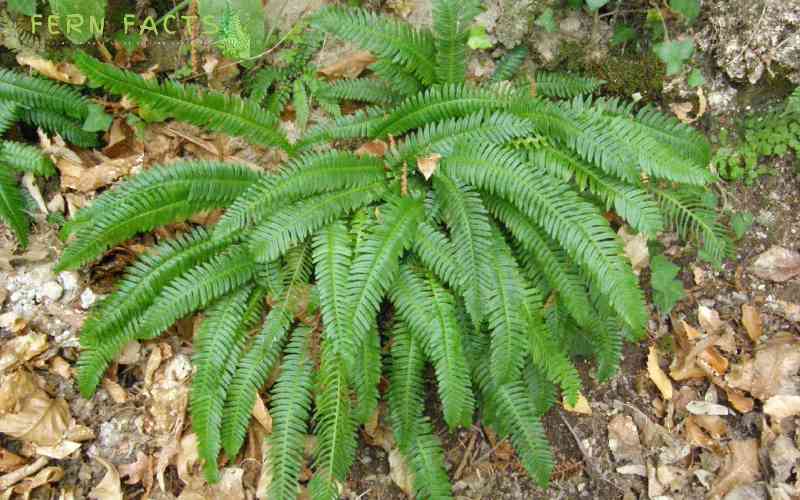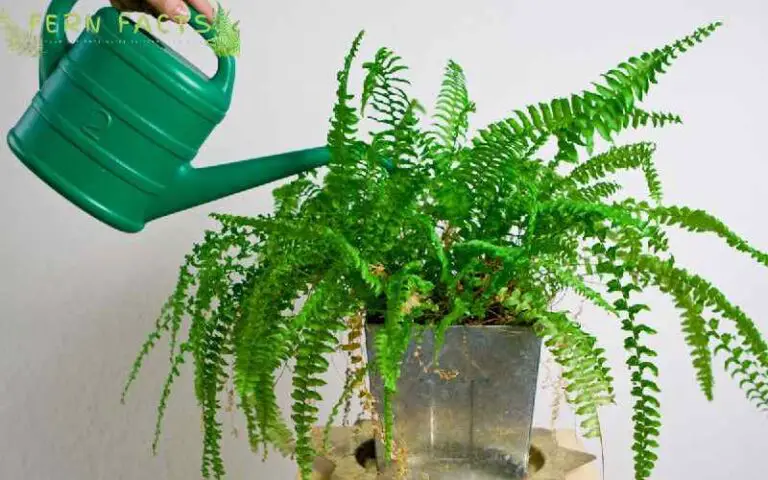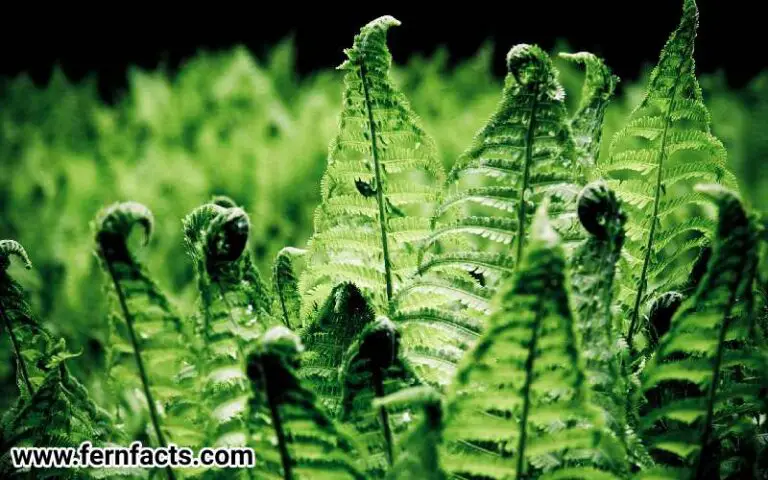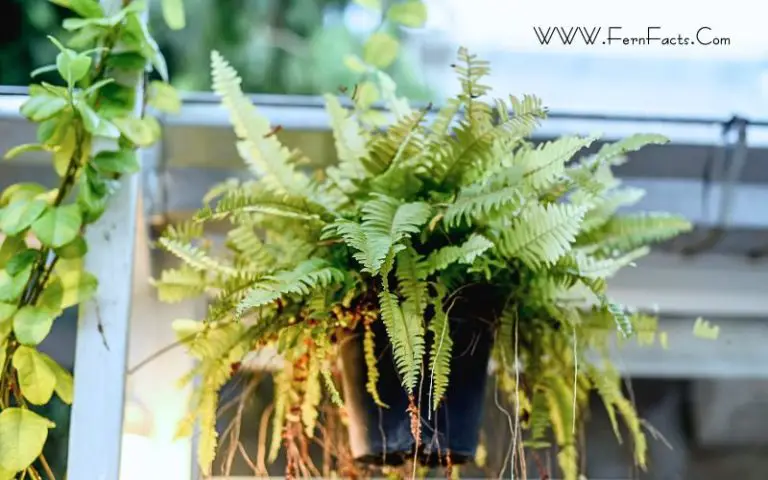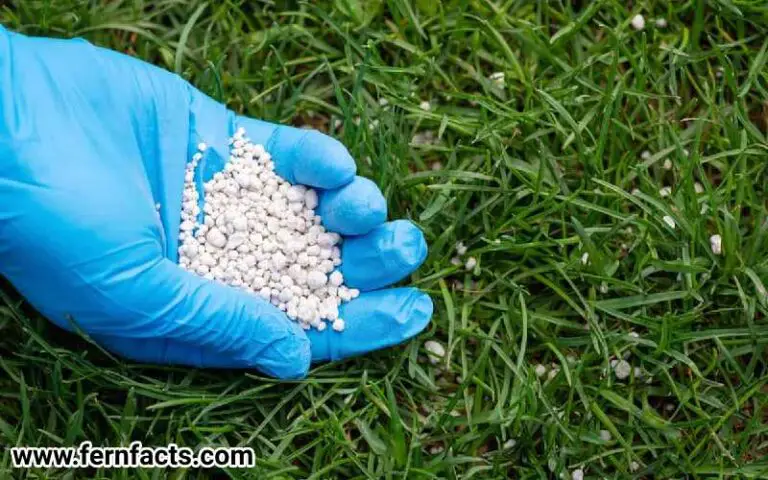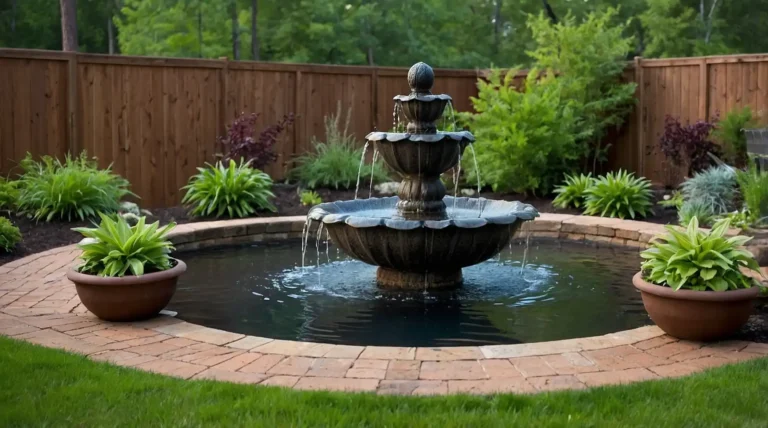How to Grow and Care a Deer Fern (Struthiopteris Spicant)
Deer ferns (Struthiopteris Spicant) are one of the medically beneficial plants that have been bestwing from ancient times.
If you want to grow these deer ferns in your house, this article will guide you from head to toe by giving you all the necessary information.
Therefore, in this article, I’ll provide you with an overview of deer ferns’ characteristics, basic care, growing, and maintenance tips, and propagation process.
Lastly, I’ll conclude the article by providing a deer fern pest problem solution and its beneficial sides so that you can grow and thrive with this plant in your house.
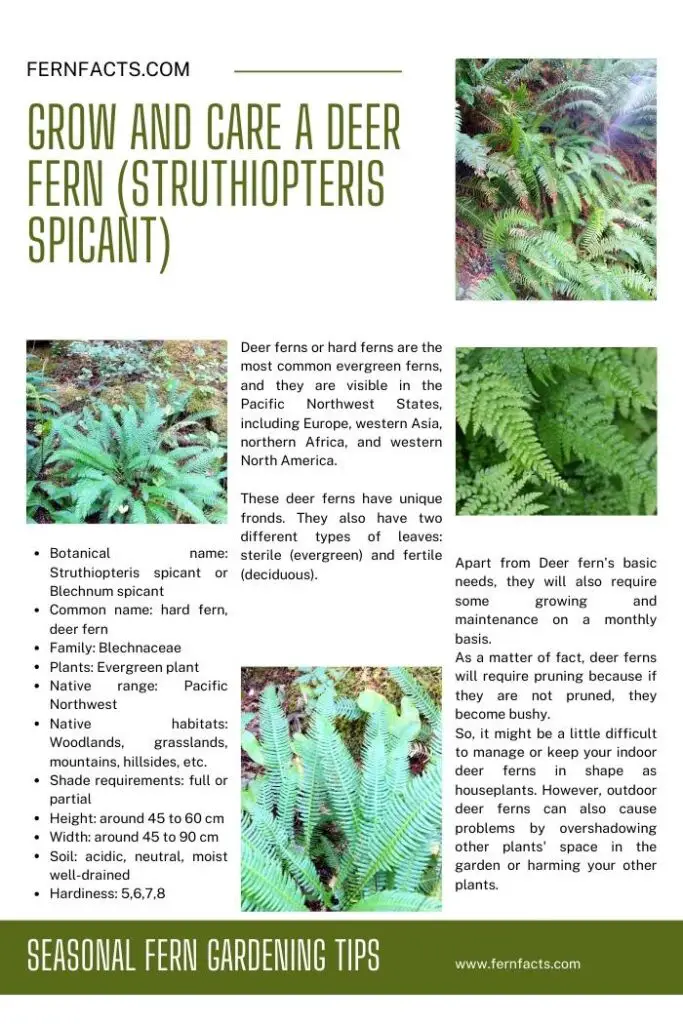
Overview of Deer Fern
- Botanical name: Struthiopteris spicant or Blechnum spicant
- Common name: hard fern, deer fern
- Family: Blechnaceae
- Plants: Evergreen plant
- Native range: Pacific Northwest
- Native habitats: Woodlands, grasslands, mountains, hillsides, etc.
- Shade requirements: full or partial
- Height: around 45 to 60 cm
- Width: around 45 to 90 cm
- Soil: acidic, neutral, moist well-drained
- Hardiness: 5,6,7,8
Deer ferns or hard ferns are the most common evergreen ferns, and they are visible in the Pacific Northwest States, including Europe, western Asia, northern Africa, and western North America.
These deer ferns have unique fronds. They also have two different types of leaves: sterile (evergreen) and fertile (deciduous).
Sterile leaves are more likely to form flat Wavy margins by distributing 5-8 mm wide. On the contrary, fertile leaves are much narrower than the sterile ones.
Similar to most fern plants, Deer ferns also prefer moist places like woodlands, grasslands, hillsides, banks of rivers and streams, and wet forests with sun-filtered shade.
Similarly, they thrive in acidic soil with rich humus. These deer ferns also received the Garden Merit award from the Royal Horticultural Society.
Deer Ferns Care and Basic Needs
If you want to grow these amazing deer ferns at your house as a houseplant, then you need to follow the necessary steps mentioned below.
Light Condition
Deer fern’s ideal and preferable light conditions are full shade or partial shade which means partial bright place or indirect sunlight.
They can adapt to all light situations but not direct and full sun exposure. Thus, you must avoid giving them direct sun exposure because full sunlight can burn their fronds.
Hereby, you must try to provide them with ideal lighting for their active growth. That’s why you must give them partial or fully shaded places with filtered sunlight.
Soil Requirements
Similarly, deer ferns prefer acidic soil with sufficient moisture. That’s why they should try to give them high-quality acidic soil with a pH level of 5.0 to 6.5. Besides, enrich the soil with other organic compost mixtures like peat moss, perlite, vermiculite, dry leaf mold, etc.
Rich potting mix will help your ferns to grow healthily by holding moisture in the soil. And so, choose a well-draining acidic or neutral soil that will absorb the excess water from the tip without drying too much.
Watering
Watering is another significant basic need for every plant as well as Deer ferns. Routine and balanced water can make your plants thrive.
Deer ferns prefer moisture and dampness in the soil. That’s why you have to water these ferns until the water is moist. Never pour too much water because they can’t tolerate standing water. It will lead their roots to suffer from rotten root conditions.
Therefore, you need to water them until the soil soaks up or absorbs the water and looks well hydrated, do not make the floating conditions. Maintain your regular watering habit while ensuring the soil’s moisture level.
Temperature and Humidity
Deer fern’s ideal temperature would be 65 to 75 degrees Fahrenheit or 18 to 25 degrees Celsius. This means they are more into cooler humidity in the atmosphere.
They don’t prefer much warmer and hotter climate conditions. However, they will still adapt to warmer conditions before they start dying.
If the temperature rises above 30 degrees Celsius, then there is a high chance of them getting damaged by the warm atmosphere.
Fertilizer
Surely, fertilizer is another basic need of deer ferns, like others, which will give you a blooming and thriving deer fern at your home. You can feed deer ferns every month.
Just skip the winter season because they don’t need to be fed much during cooler seasons. And so, you can use all-purpose fertilizers to optimize their growth.
Just follow the labeled instructions before you apply the fertilizer. Don’t overfeed them, it will cause you a lot.
Alternatively, you can also use homemade organic fertilizer like banana leaves, coffee grounds, etc. It will also work magically to optimize their growth.
You Can Know More Details About Button Fern Species.
Deer Fern’s Grooming and Maintenance Tips
Apart from Deer fern’s basic needs, they will also require some growing and maintenance on a monthly basis.
As a matter of fact, deer ferns will require pruning because if they are not pruned, they become bushy.
So, it might be a little difficult to manage or keep your indoor deer ferns in shape as houseplants. However, outdoor deer ferns can also cause problems by overshadowing other plants’ space in the garden or harming your other plants.
That’s why you need to trim or prune them often. You can prune them in the spring or winter seasons. Just cut their yellow, brown, or damaged fronds to enhance their growth.
It will make your ferns healthier while leaving a successful path for the airflow.
How to Propagate Deer Ferns
Propagating would be a fun job to do as a gardener. Let’s find out how to propagate deer ferns.
Root Division Process
Deer ferns can easily be propagated by the division method. To do this, you need to dig up the whole plant from the pot or the ground. Wear gloves for extra protection.
Dust off the soil and divide the roots from the main plants with any trowel or any sharp knife. Try to ensure each part has an equal amount of roots.
Prepare the new soil mixture and replant each section in a pot or container or in your garden. After replanting the ferns, water them properly to ensure sufficient hydration.
Later, locate them in a partially shaded place until you see some new growth in them.
Spores Collection Method
For this method, you need to collect any mature plants that have new spores on the underwear of the fronds.
It would be a very lengthy process because normal deer ferns take a minimum of 3 to 4 years time to produce spores underneath the fronds.
However, if your plant has spores, then you can use this technique as well.
For propagation, take white paper to collect the spores from the fronds. just tap or flick the fronds with your finger; let spores fall onto your paper slowly.
Then make the soil with rich fertilizer, and organic compost and spread the spores on the soil. Water the soil thoroughly and locate the pot in a shaded place.
After a couple of weeks, you will notice a green structure coming through from the soil surface.
Wait for a couple more days to strengthen the baby plants so that you can transfer them to the pot or container.

Deer Fern’s Pests and Diseases
Deer ferns are very prone to spider mites and aphids. They are highly sensitive to these pests. If you notice any symptoms of these pests, then immediately treat your deer ferns if you don’t want to lose them.
You can use any pesticides or insecticidal soap to get rid of these pest problems. Besides, water the plants on a regular basis to reduce the dark spots on them.
Apart from these pests, deer ferns are not primarily prone to any disease except sori diseases, which are common fungus infections.
In this case, you can use any fungicides that are available in the market. Follow the instructions before you use these pesticides to avoid any kind of further reaction.
Many Uses of Deer Fern
You can use these ferns in a multipurpose way in your house.
- Attractive as houseplants.
- Amazing garden covers in lands, gardens, and yards.
- Deer ferns are Edible plants. This means its fronds, and shoots are edible.
- Deer ferns are also medical plants that can be used to reduce many diseases like stomach pains, lung disease, digestion, etc.
Conclusion
In short, Deer ferns are amazing edible and medicinal purposes plants that have profoundly contributed from ancient times.
Noticing their all-plus sides, you can effortlessly plant these houseplants in your house by following simple guidelines and giving them their basic natural needs.
Additionally, by grooming and maintenance, you can sustain their green appearance in your garden.
While troubleshooting all the pest problems and comprehending their beneficial sides, you can undoubtedly give them a thriving atmosphere in which to live.

